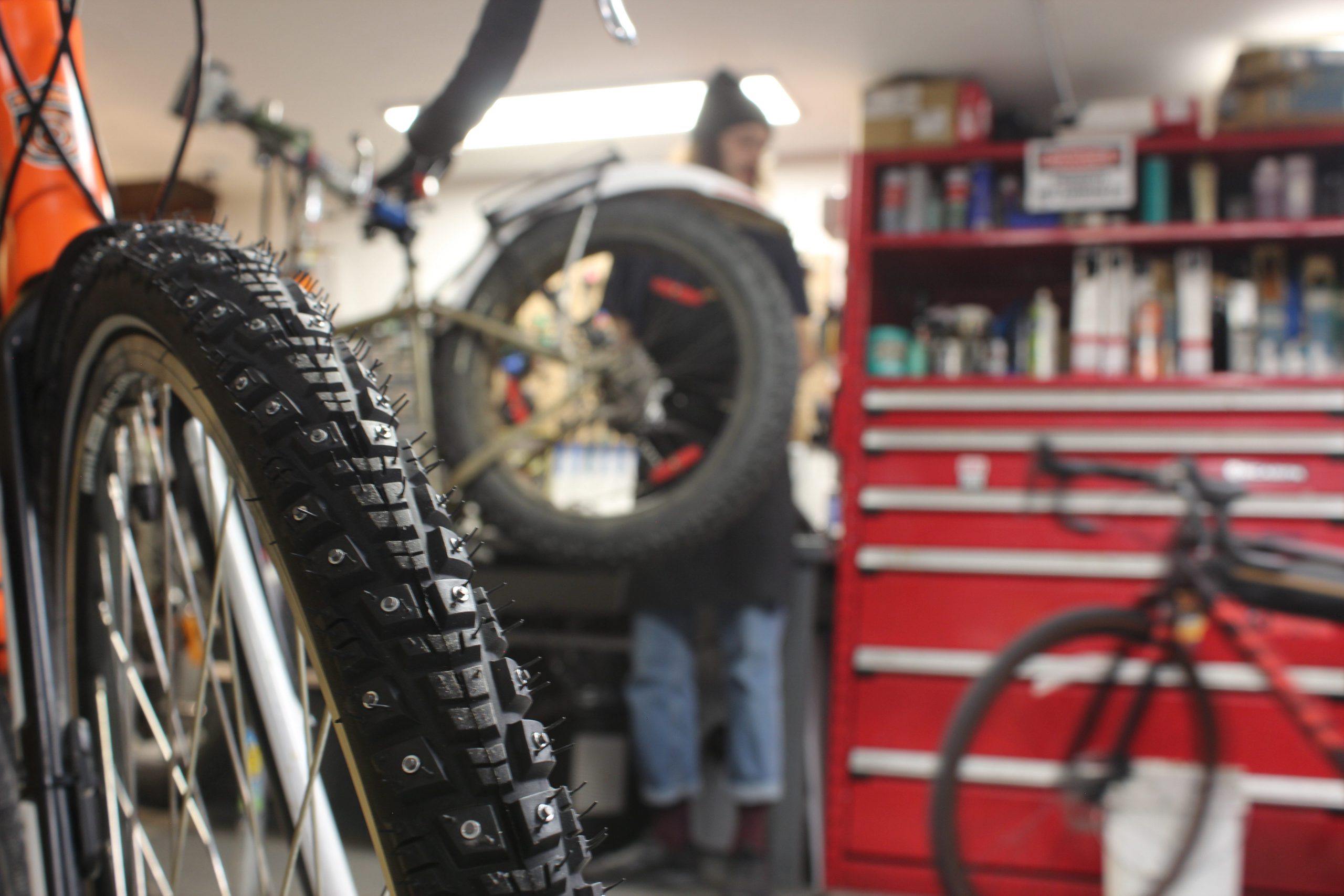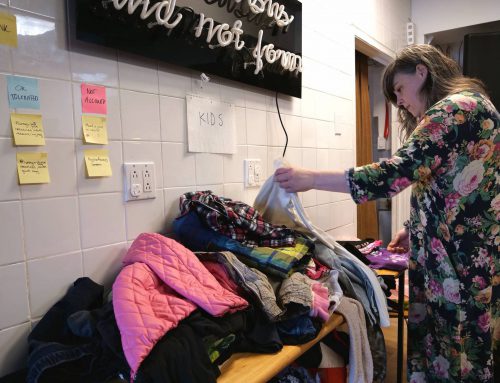BY Philippe Robin
Éliane Trudeau has been winter cycling since 2016. They work for a bike courier company based in Montreal that runs year-round so Trudeau has cycled in every kind of weather.
“The city has done a lot to make winter cycling accessible, but we can do more to reduce risks,” Trudeau says. “Every winter there seem to be more cyclists than the previous year.”
Outside of work, cycling has been their main means of transportation for many years. Trudeau does not see winter cycling as a big deal as they are used to it.

Éliane Trudeau uses their bike to deliver goods all year long. Photo by Philippe Robin.
“It makes sense to many people because you get to exercise while commuting,” Trudeau says. “Cycling makes your life easier because you don’t have to deal with parking a car or have to shovel the snow off it before going to work.”
According to cycling lobby group Vélo Québec, the retention rate of cyclists in Montreal during winter increased from 8.4 to 13.6 per cent between 2016-17 and 2020-21.
“This change can be explained by the evolution of cycling infrastructure in the city,” says Magali Bebronne, the programme director at Vélo Québec. “One of the most significant changes is that people stopped seeing cycling as a summer sport.”
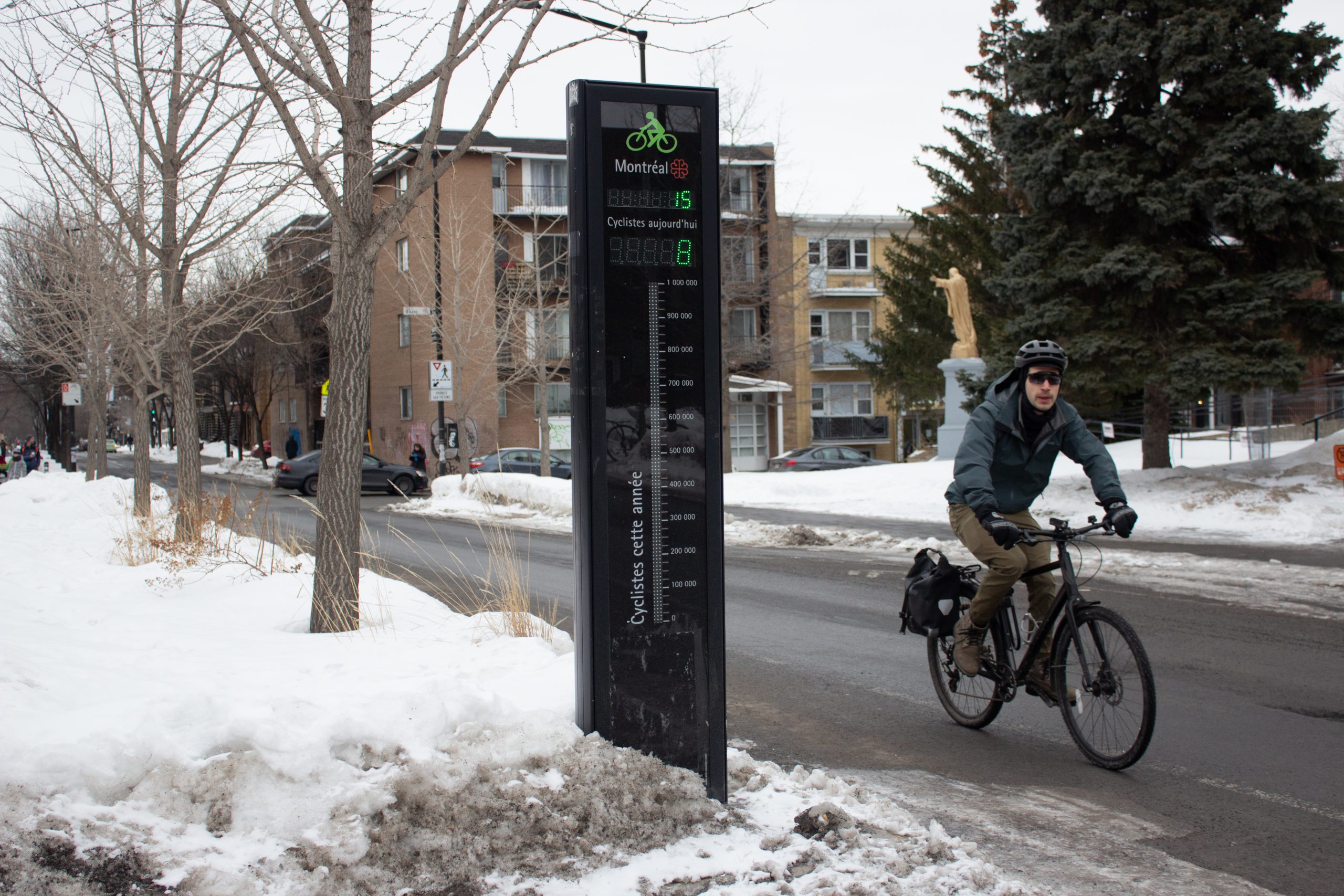
A cyclist passes in front of the bike counter at Laurier station. Photo by Philippe Robin.
The city of Montreal has installed bicycle counters next to many bike paths. There are currently 50 bike counters on the island. Using this information, it is possible to compare the number of cyclists who used a specific bike path over time. And those numbers keep going up.
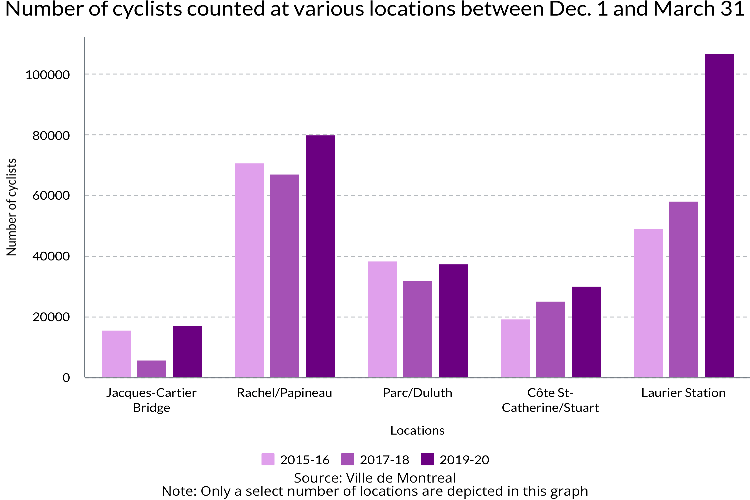
Comparing the number of cyclists passing in front of different bike counters. Graphic by Philippe Robin.
Bike mechanic Jean Vautour believes that winter cycling is not as dangerous as it used to be.
“Ten years ago, winter cycling involved sliding all the time because you did not have the right tires and having to ride next to the cars because there were not enough cleared bike paths,” he says. “The people who would ride their bikes during winter were cycling enthusiasts. Now, everybody understands that with the right equipment, winter cycling is accessible.”
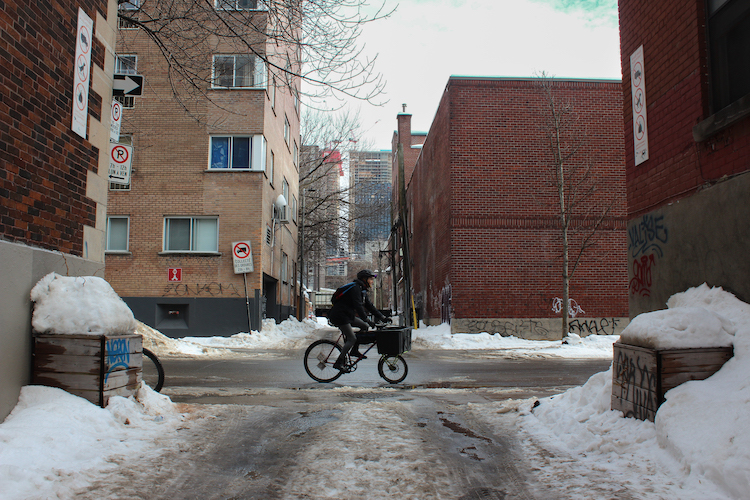
Trudeau delivers goods on their cargo bike. Photo by Philippe Robin.
Vautour notes that ten years ago it was hard to find a bike that would be suitable during winter. But he says that has changed.
“In terms of winter tires, there are many more options now than there used to be,” Vautour says. “The lack of equipment used to be a barrier for winter cycling. Now the only barrier left is the lack of service from the city and its boroughs.”
There are a total of 717 kilometers of bike paths maintained all year long. But according to Vélo Québec, only 218 kilometers are protected by physical elements while 499 kilometers are bike lanes indicated only by signs and images painted on the road.
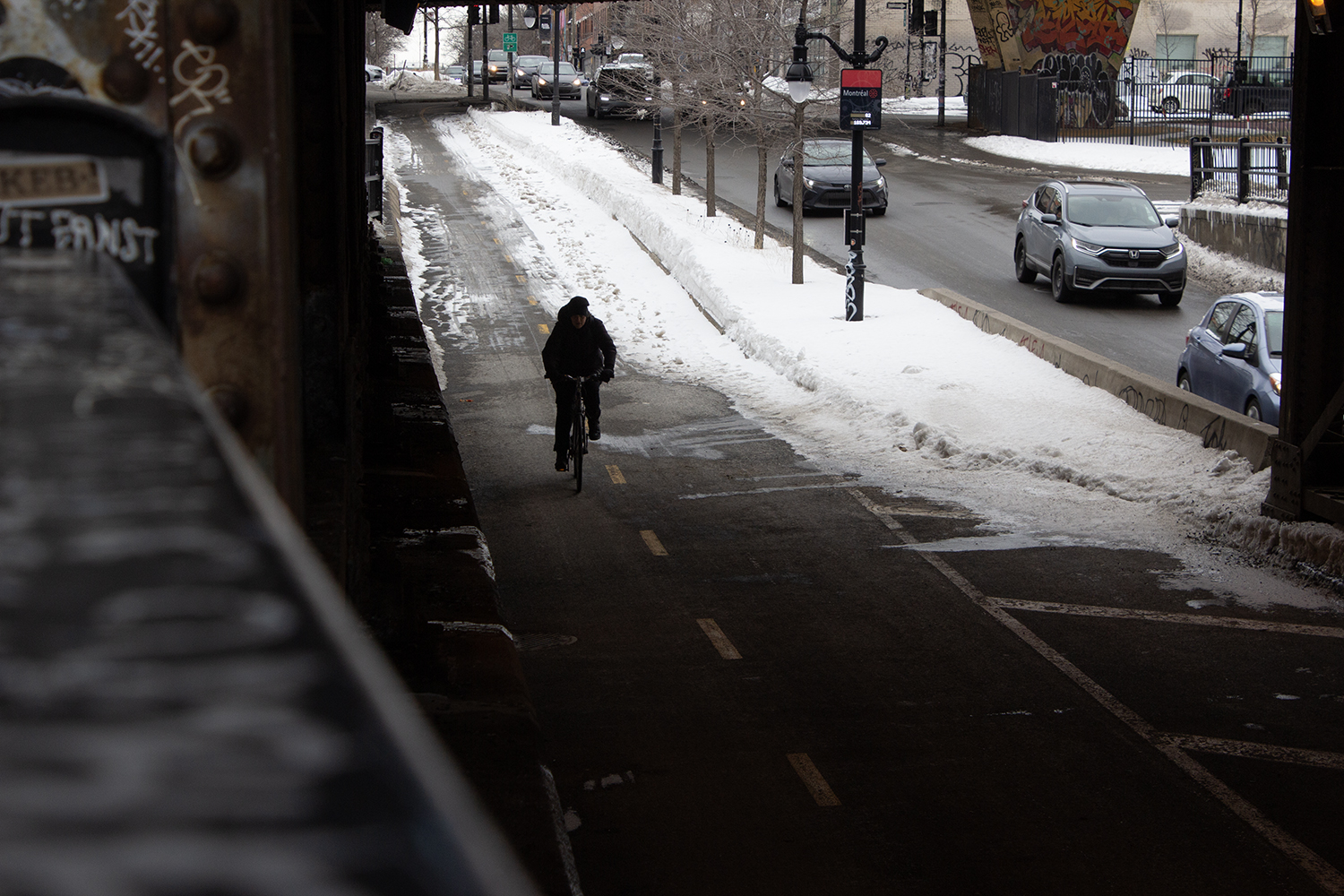
A cyclist uses a protected bike path. Photo by Philippe Robin.
“The biggest gap in the city’s plan to make cycling possible during winter is the lack of maintenance of non-protected bike lanes,” says Vautour. “Most protected bike paths are well maintained, while those that are not tend to be forgotten by city employees.”
But city officials have a different take.
“Pedestrians and cyclists are the most vulnerable users and their safety is a priority for the City of Montreal,” says Camille Bégin, a spokesperson for the city of Montreal.
According to Montreal’s official numbers, the city maintains 80 per cent of its bike paths during winter.
But others challenge the city’s claim.
“There might be 80 per cent of bike paths that get plowed once during the winter,” Vautour says. “But that does not mean that all these bike paths are well maintained.”
“Bike lanes are often forgotten by municipal employees who tend to shovel snow from car lanes onto bike paths,” says Trudeau. “When city employees are sent to clear a road, they should clearly be informed that there is a bike path next to it. Clearing the bike path should be just as important as clearing the road. Otherwise, cycling in winter can get very difficult and many people might decide to use other means of transportation.”
To learn more on what the city of Montreal is doing to make cycling safer, click on the video below.
Is Montreal doing enough to make cycling safe? Video by Philippe Robin.
Winter cycling is common in other northern cities. According to Vélo Québec, 70 to 80 per cent of cyclists in Copenhagen, Denmark, ride their bikes all year long. Montreal is still very far behind with only 13.6 per cent in 2020-21.
Trudeau thinks that Montrealers are the ones who have to pressure the city officials to do more.
“The best way to pressure the city to take care of its bike paths is to use them,” Trudeau says. “The more people ride their bikes during winter, the better bicycle paths will be maintained.”
